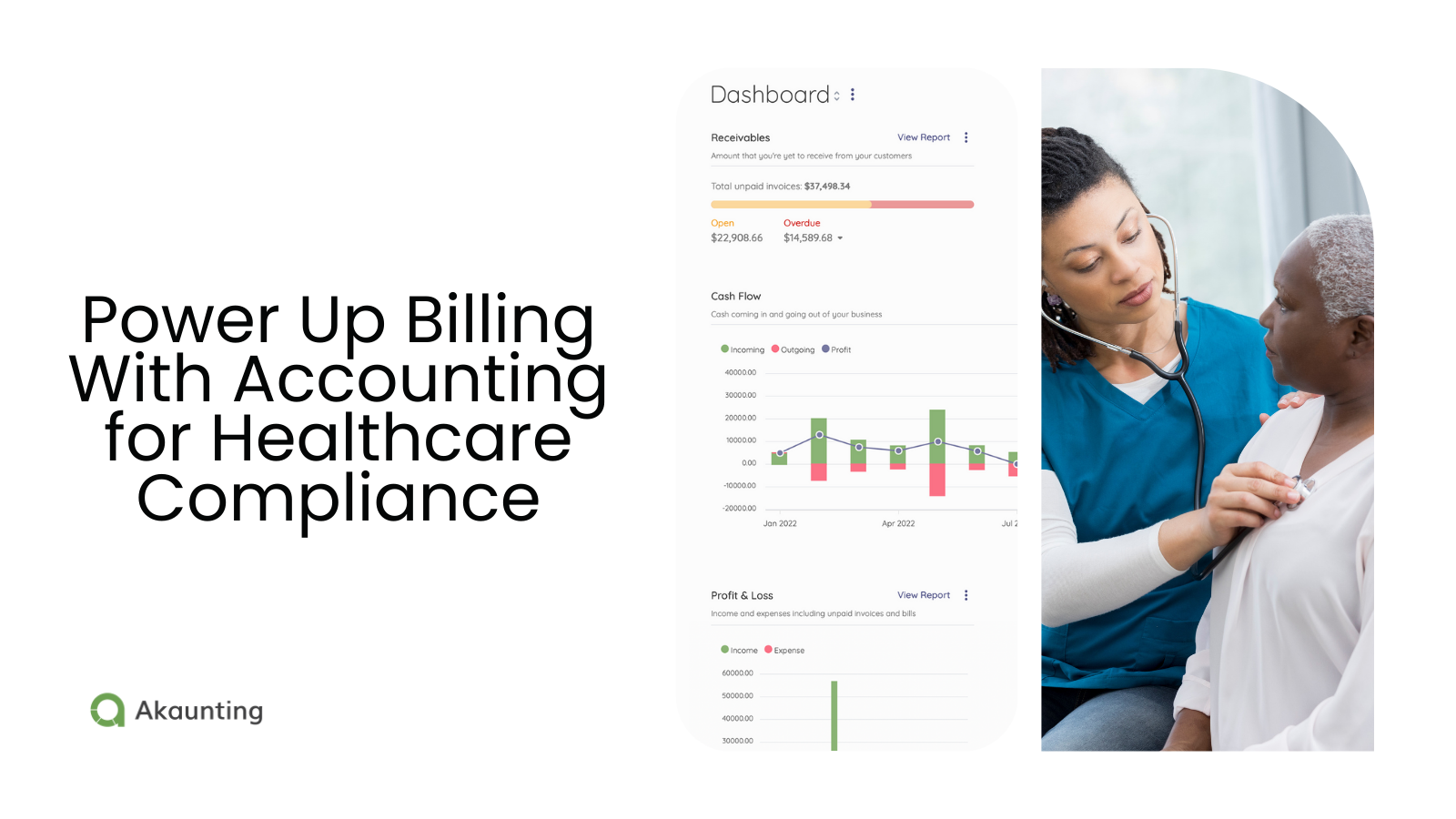5 Common Small Business Accounting Mistakes and How to Avoid Them
Reading Time: 7 minutesRunning a business is challenging. Every business owner knows that managing business finances means constantly putting in time and effort. Yet, many small businesses fall prey to common accounting errors that mess up their financial statements, disrupt cash flow, or lead to tax preparation issues.
Small business accounting mistakes aren’t minor errors. They distort profit and loss statements and create inaccurate financial records you can’t depend on.
That’s why accounting isn’t just about crunching numbers. It’s the backbone of your business structure. Accurate records allow you to make wise and timely business decisions. They also help you identify common accounting mistakes before they escalate. These can be avoided by knowing where to look and having the right systems.
In this article, we explore five of the most common accounting mistakes that business owners often make. Whether you’re managing your financial records or relying on accounting professionals, understanding these pitfalls will help you craft a healthier cash flow, build solid financial statements, and avoid common mistakes in your accounting process.
Table of Contents
- Mixing Personal and Business Finances
- Neglecting Regular Bookkeeping
- Improper Expense Categorization and Skipping Account Reconciliation
- Misunderstanding Cash Flow vs. Profit
- Overlooking Sales Tax Obligations
- Final Words
1. Mixing Personal and Business Finances
One of the biggest small business accounting mistakes stems from one simple error: mixing personal and business finances.
As a busy business owner, especially if you’re self-employed, it might seem easier to use a single bank account or the same credit card for personal and business expenses. However, doing so leads to confusing financial records.
When you blend personal finances with your business bank transactions, tracking tax deductions or separate accounts for payroll taxes becomes nearly impossible. This confusion makes your accounting process a nightmare and creates more issues during tax season.
For instance, mixing credit card spending with your accounts payable entries means your income statements are no longer valid. This misrepresentation distorts the chart of accounts that forms the foundation of your business structure.
This mistake also makes it much more difficult for you to track your assets and cash flow, and you may be liable to fines from tax authorities. It also creates personal liability, as creditors can come after your personal assets to settle business debts.
How to Avoid It
- – Open Separate Accounts: Create dedicated bank accounts and credit cards solely for business expenses. This simple step protects your financial records from unwanted mix-ups.
- – Use a Modern Accounting Software: Use solutions like Akaunting that automatically categorize transactions. This ensures that every entry appears in your financial statements exactly where it belongs. It also makes it easier to calculate any sales or value-added tax.
- – Schedule Regular Reviews: Conduct monthly reviews of your bank statements and internal records. This practice helps catch any accidental mix-ups early and ensures you’re ready for tax preparation and year-end reporting.
- – Educate Yourself: Keep up to date with accurate recordkeeping practices as suggested by the U.S. Small Business Administration to avoid subsequent common mistakes.
2. Neglecting Regular Bookkeeping
As a small business owner, you need to juggle a lot, from creating new offers, marketing and advertising, outreach, delivering to your customers, and building your network. It’s not uncommon if you feel accounting is not a priority until tax season and put it aside.
However, neglecting regular bookkeeping is one of the most common mistakes.
First, consistent recordkeeping allows you to monitor and maintain a healthy cash flow so that you can make informed business decisions.
Secondly, when bookkeeping takes a back seat, it makes it more likely to miss out on crucial transactions, such as tax deductions, minor payments, or investments you’ve bought months ago. This makes your tax preparation a lot more hectic and longer. It also means you’ll be unprepared in case of audits by the IRS.
How to Avoid It
One of the easiest ways to avoid this mistake is to consider using modern accounting software.
Using an account automation software can help small businesses avoid common accounting mistakes, like missed deadlines, manual errors, and inaccurate financial reporting.
This software ensures accuracy and saves time by automating processes such as expense tracking, invoice management, and financial reconciliation. This streamlined approach reduces the risk of oversights and ensures that small businesses maintain proper financial records, helping them stay compliant and make better-informed decisions.
You can also:
- – Set a Consistent Schedule: Update your financial records weekly or monthly. Regularity means that you can accurately account for every detail, from credit card transactions to accounts payable.
- – Consider Professional Help: If managing the bookkeeping on your own becomes overwhelming, hire an accounting professional to ensure your financial records are maintained.
- – Use Cloud-Based Solutions: Modern systems let you access bank statements and other financial data from any device, ensuring your business finances are always in sync.
3. Improper Expense Categorization and Skipping Account Reconciliation
Improper expense categorization is another common mistake. This misclassification makes it challenging to identify spending patterns, follow budgets properly, and forecast expenses.
It can also lead to unintended fraud. For instance, if your state puts a tax-refundable limit on business meals and you classify one as an office supply, the tax department may consider this potential fraud to reduce your taxes.
A related mistake is skipping account reconciliation. You might miss out on reporting expenses without regularly comparing your internal records to your bank statements. This leads to discrepancies. Even small expenses like coffee and stationery increase over time and impact your net profitability.
How to Avoid It
- – Develop a Detailed Chart of Accounts: Craft a chart of accounts that accurately reflects your business structure, ensuring each business expense and tax deduction is clearly defined.
- – Use Invoice Prefixes: Create custom prefixes or identifiers for all invoices and purchases where possible. This helps you easily categorize expenses and sales.
- – Pay with Cards or Bank Transfer: Paying digitally makes tracking easier, especially if you connect your bank account to accounting software. If you pay in cash, immediately photograph your receipt and link it to the transaction. Bank apps like Revolut allow you to do this from the app.
- – Detect Duplicates: Double-check expense claims to see that they only match one bank transaction. Modern accounting software can help speed this up, using machine learning to identify potential duplicates.
- – Train Your Team: If multiple people manage your accounting process, ensure everyone understands the importance of proper expense categorization. Regular training minimizes common accounting errors and boosts overall efficiency.
4. Misunderstanding Cash Flow vs. Profit
Many small business owners mistakenly assume that they have ample cash flow if their books show a profit. This misunderstanding is one of the most dangerous accounting mistakes.
Profit, after all, represents the number on your income statements after expenses are deducted. It does not guarantee that you have enough cash flow to cover day-to-day operations.
Often, profits may be high while cash flow remains low, especially if there are delays in collecting receivables or if you have significant funds tied into investments. A business owner might see promising numbers on their financial statements but find insufficient cash when critical expenses, such as payroll taxes or urgent business expenses, come up.
This gap can completely halt growth opportunities and force you to take difficult business decisions that can hamper overall business performance.
How to Avoid It
- – Generate Regular Cash Flow Statements: In addition to your income statements, keep detailed cash flow statements that record every inflow and outflow.
- – Use Financial Forecasting Tools: Leverage modern accounting software to predict future cash flow based on past data.
- – Maintain a Cash Reserve: Build and maintain a cash reserve to cushion against delays in receivables or unexpected business expenses. This is a common trait among large, successful businesses. For example, Amazon has a $100 billion cash reserve.
- – Review Business Decisions Regularly: Hold monthly or quarterly reviews to compare profit margins with actual cash flow, ensuring your business finances remain balanced.
- – Accelerate Receivables: Motivate customers to pay early or in full, such as with discounts and bonuses. Follow up on overdue invoices so you can collect cash faster.
5. Overlooking Sales Tax Obligations
Many small business owners don’t realize they’re making a serious accounting mistake until it’s too late: neglecting their sales tax responsibilities.
Ever since the 2018 Wayfair decision changed the game, businesses can be on the hook for collecting sales tax in states where they’ve never even set foot. States don’t mess around with this stuff. If you should have collected tax but didn’t, you’ll likely end up paying it yourself, plus penalties.
Imagine suddenly owing thousands in back taxes you never budgeted for!
The smart approach is checking where your business has “nexus” (tax-speak for when you’re required to collect tax), getting the proper permits, and using software to handle the calculations and filings.
The headache of dealing with an audit or scrambling to catch up on years of unfiled returns is definitely not worth the initial convenience of ignoring these obligations. This accounting detail shouldn’t fall through the cracks, especially for growing businesses.
How to Avoid It
- – Determine Where You Have Nexus: Analyze your sales data to pinpoint the states where economic activity creates a sales tax obligation.
- – Register for the Necessary Permits: Once you identify the states with a tax obligation, register for the required sales tax permits.
- – Stay Informed on Tax Law Changes: Regularly review updates from state revenue departments and the U.S. Small Business Administration to ensure compliance.
- – Leverage Automated Sales Tax Solutions: Modern accounting software like Akaunting integrates with sales tax platforms to automatically calculate, collect, and file taxes. This makes it easy to follow the law even if you don’t keep up with tax changes.
- – Plan for Tax Time: Regularly review your bank statements, tax deductions, and business expenses to avoid any last-minute surprises.
Final Words
Accounting errors aren’t just minor oversights for small business owners. They can impact your entire business structure and make it impossible to track your cash flow, accurately follow budgets, and keep track of where your money’s going.
These mistakes can open you up to audits and lawsuits and sink your business if you’re hit with fines.
Take the time today to review your current accounting services and processes. Implement these practical steps to be proactive against falling prey to common small business accounting mistakes.
Author bio:

Kelly Moser is the co-founder and editor at Home & Jet, a digital magazine for the modern era. She’s also the content manager at Login Lockdown, covering the latest trends in tech, business and security. Kelly is an expert in freelance writing and content marketing for SaaS, Fintech, and e-commerce. startups.




